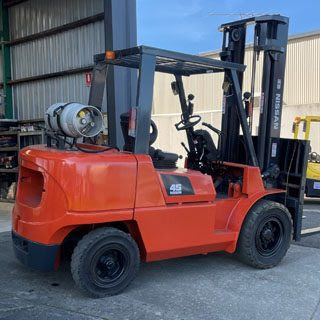What’s Included in a Standard Forklift Servicing Package?
Forklifts are built to take on tough jobs, but like any piece of equipment, regular servicing is essential to keep them running safely and efficiently. Understanding what’s included in a standard forklift servicing package can help you stay on top of maintenance and avoid costly breakdowns.
So, what exactly does a standard forklift service include? Let’s break it down.
Why Forklift Servicing Matters
Before we get into the specifics, it’s worth understanding the importance of routine servicing. Forklift for sale operates under intense conditions—lifting heavy loads, navigating uneven surfaces, and working long hours. Over time, this wears down key components, from hydraulics to brakes.
Regular servicing helps:
- Extend the lifespan of the forklift
- Ensure operator safety
- Reduce unexpected downtime
- Maintain fuel efficiency
- Stay compliant with workplace safety regulations
Ignoring servicing can not only lead to mechanical failure but may also pose serious safety risks to operators and other workers on-site.
Key Inclusions in a Standard Forklift Servicing Package
A forklift sales Melbourne servicing package is designed to address both preventative maintenance and performance checks. Depending on the service provider and the forklift brand/model, the details may vary slightly—but here’s what you can typically expect:
- Inspection of Safety Systems
Forklifts must meet strict safety standards. During servicing, technicians will check all safety-related components, including:
- Seatbelts and operator restraint systems
- Horn, lights, and warning alarms
- Fire extinguisher (if fitted)
- Overhead guard
- Forks and mast condition
If any safety system is not functioning properly, it will either be repaired on the spot or flagged for replacement.
- Hydraulic System Check
An essential component in lifting and lowering loads is the hydraulic system. A standard service includes:
- Checking hydraulic fluid levels
- Inspecting hoses and cylinders for leaks or damage
- Testing lift and tilt functions for smooth operation
Leaks in this system can lead to reduced lifting power and pose a slipping hazard in the workplace.
- Engine or Motor Maintenance
The type of maintenance here depends on whether your forklift is powered by an internal combustion engine (diesel, petrol, LPG) or an electric motor.
For internal combustion engines:
- Engine oil change and filter replacement
- Fuel system inspection
- Air filter replacement
- Spark plug check (if applicable)
- Cooling system inspection
For electric forklifts:
- Battery condition check
- Watering and cleaning of battery (if lead-acid)
- Charger inspection
- Cable and connector inspection
Regular engine or battery servicing ensures the forklift performs consistently, with fewer power interruptions or emissions issues.
- Brake System Inspection
Brakes are one of the most critical safety components in any vehicle. A typical forklift service will include:
- Brake pad/shoe inspection
- Adjustment of brake systems
- Parking brake functionality check
- Hydraulic brake fluid check (if applicable)
Worn or ineffective brakes can be dangerous in tight warehouse spaces or on inclines, so this part of the service is never skipped.
- Transmission and Drivetrain Check
The transmission and drivetrain handle movement and power distribution. A standard servicing package will look into:
- Gearbox oil levels
- Drive shaft inspection
- Clutch operation (manual models)
- Transmission filter (if fitted)
Any unusual noises, difficulty shifting gears, or jerky movement are red flags that may need attention.
- Steering and Suspension Components
To maintain precise control and operator comfort, the technician will assess:
- Steering linkage wear
- Hydraulic steering fluid (if applicable)
- Condition of axles and wheels
- Suspension bushings and mounts
Loose or unresponsive steering can reduce operator control, especially when maneuvering in tight aisles.
- Tyre Condition and Pressure Check
Forklifts may be fitted with pneumatic, solid, or cushion tyres. During service, technicians will:
- Inspect tyres for wear, damage, or punctures
- Check tread depth (if applicable)
- Ensure correct inflation pressure (for pneumatic tyres)
- Rotate tyres if necessary
Tyres are essential for stability and safe load handling. Uneven wear can also point to alignment or suspension issues.
How Often Should Forklifts Be Serviced?
Servicing intervals depend on usage and manufacturer guidelines. As a general rule:
- Every 250 hours: Basic servicing (oil change, inspections)
- Every 500-1,000 hours: More detailed maintenance, possible part replacements
- Annually: Comprehensive safety inspection and full service
If you're unsure whether your forklift is due for a service, it's better to err on the side of caution. Delaying maintenance might save a few dollars today but could cost thousands in repairs or downtime tomorrow.


Comments
Post a Comment